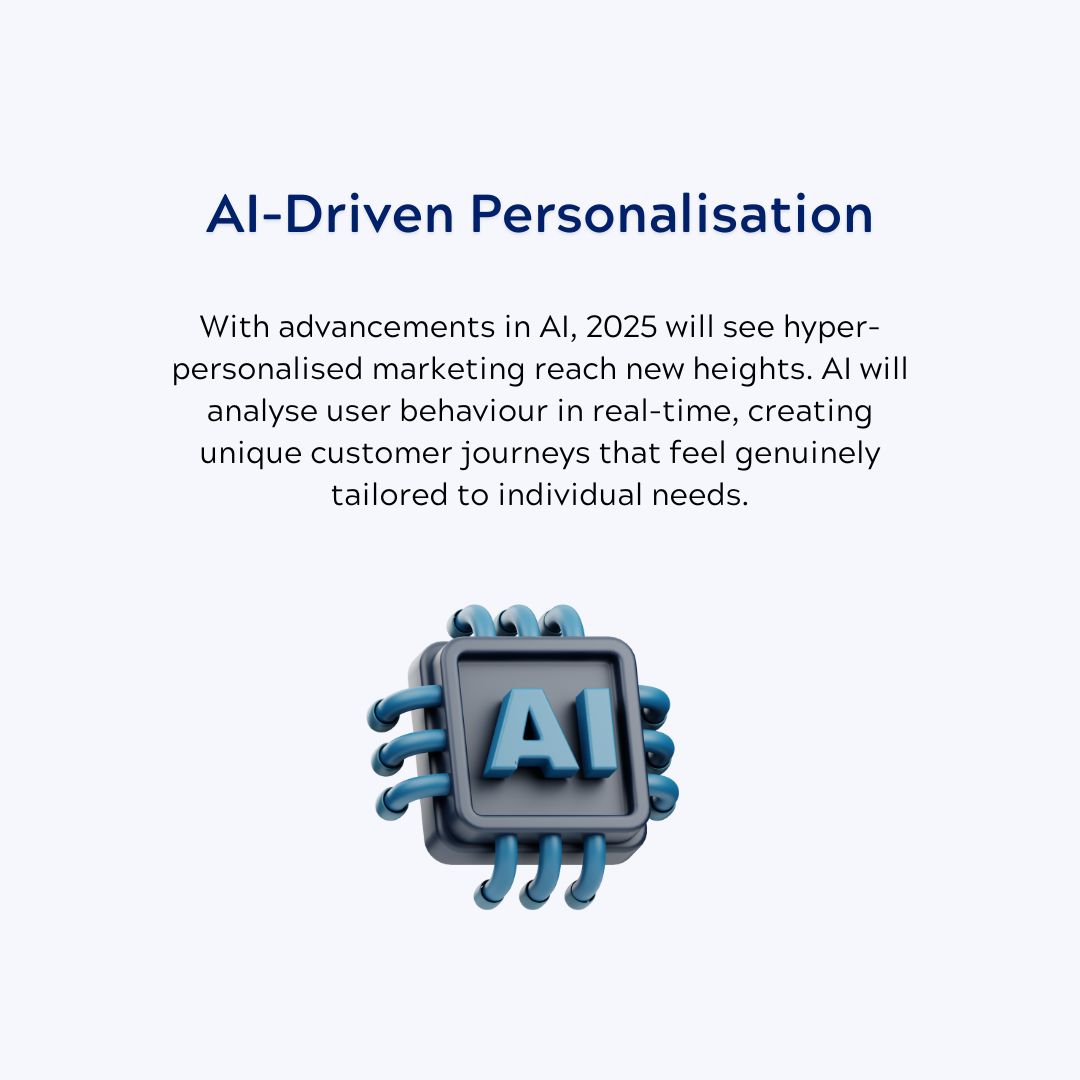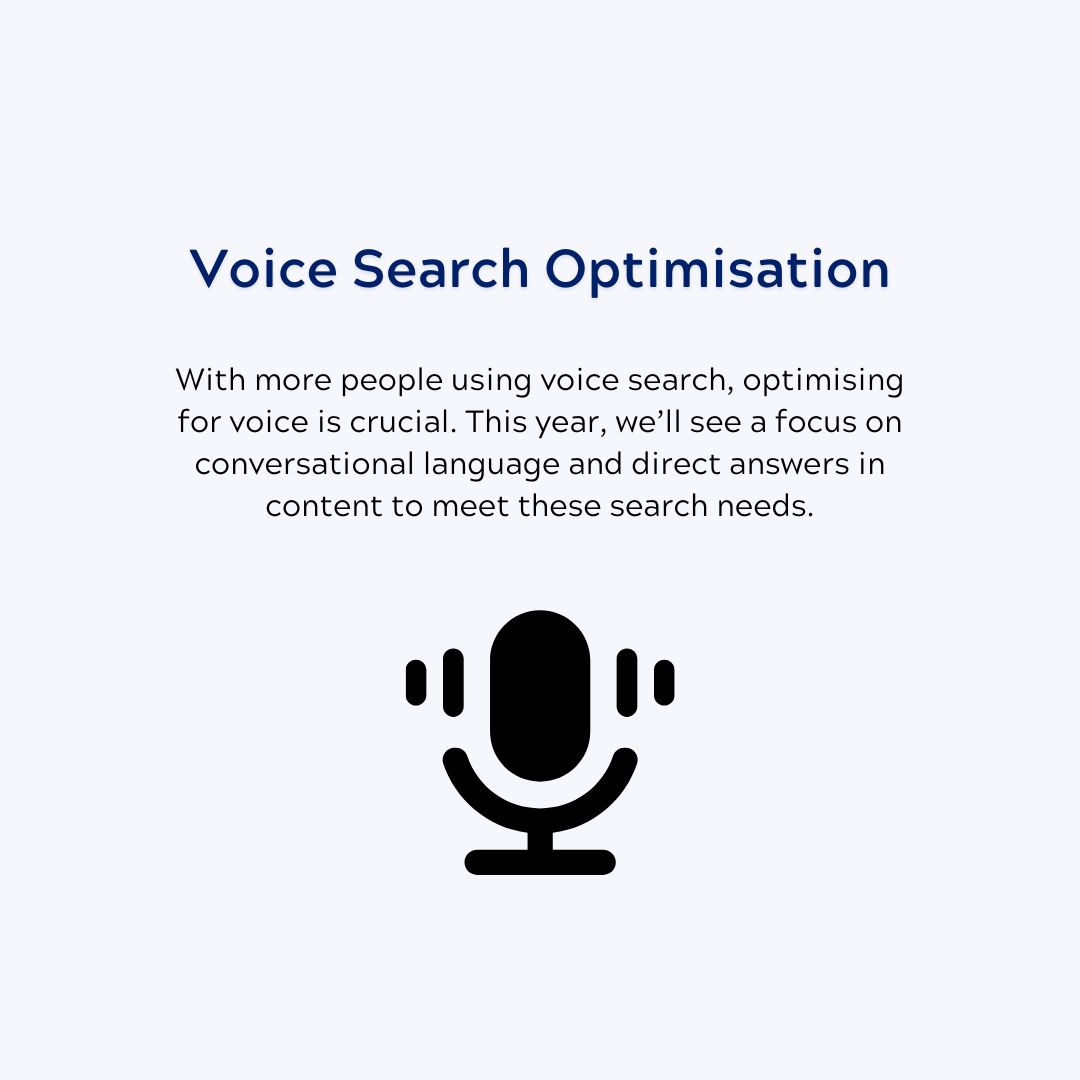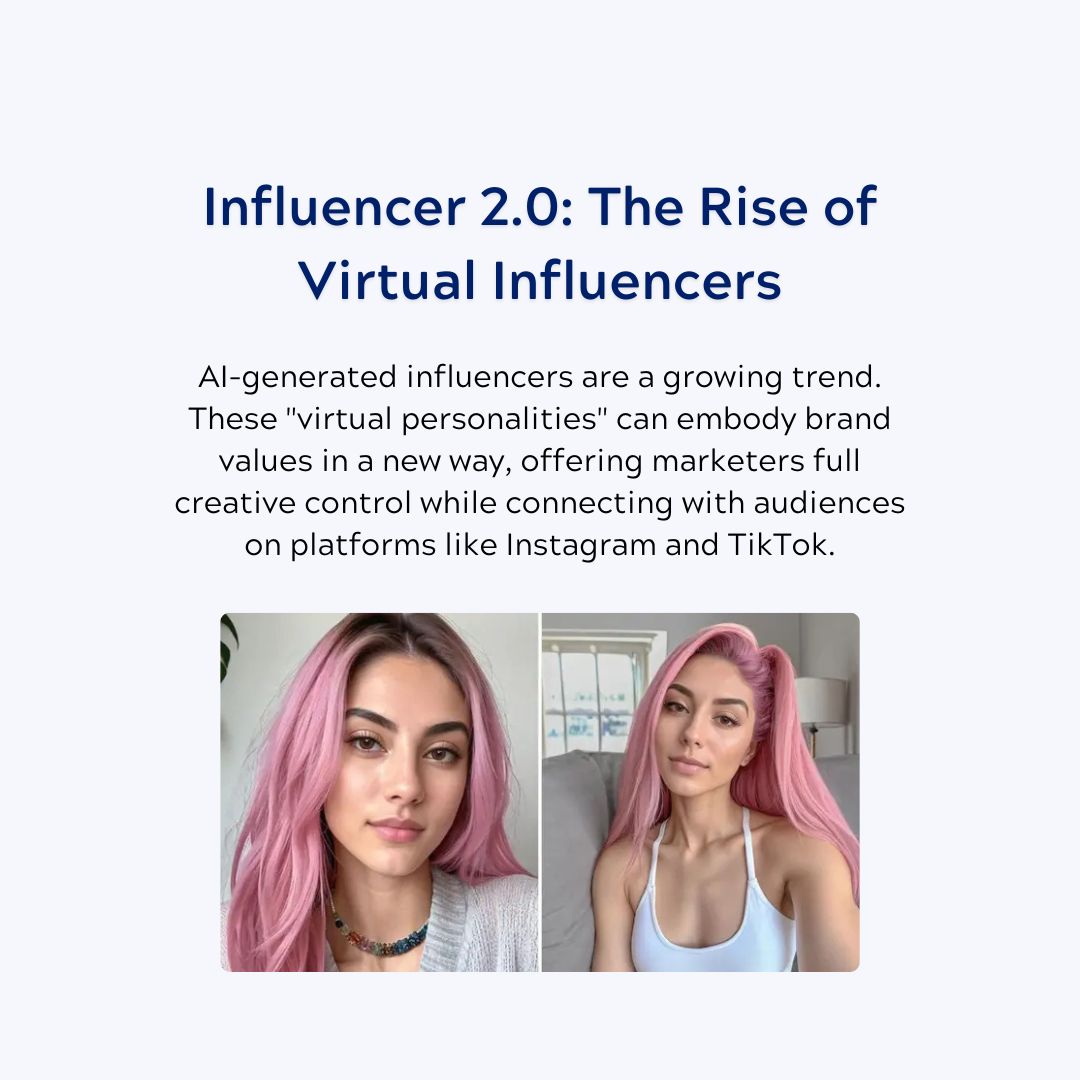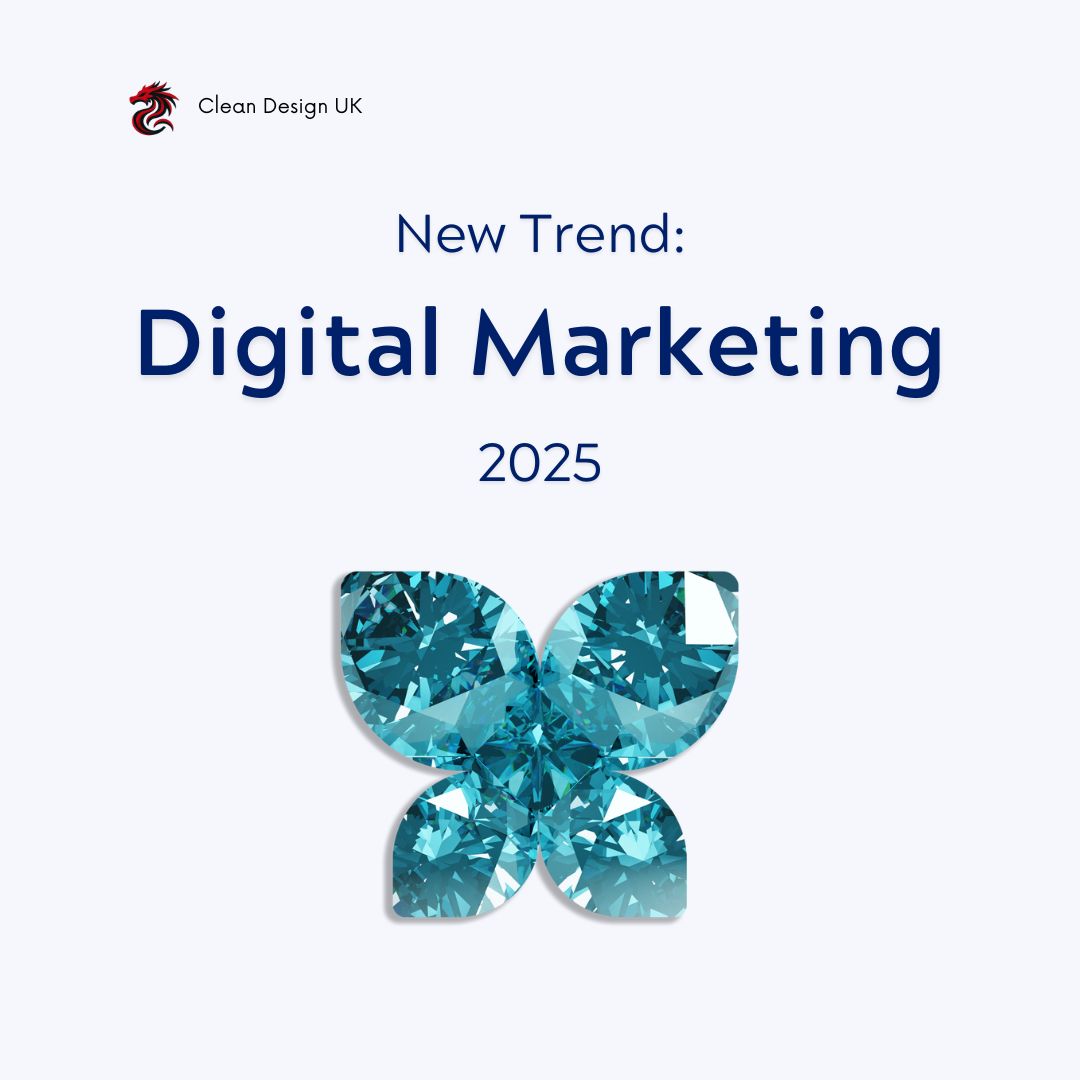Unveiling 2025's Digital Marketing Game-Changers: A Developer's Insight
As a creative British full stack developer deeply entrenched in the digital landscape, I find the innovations of 2025 nothing short of exhilarating. The synergy of AI, augmented reality, and emerging tech is not just pushing boundaries—it's obliterating them. Brands are crafting hyper-personalised, immersive experiences that not only engage but also resonate on a profoundly personal level. Join me as we delve into four groundbreaking trends that are redefining digital marketing and, by extension, our interaction with technology.
AI-Driven Personalisation: Crafting Unique Customer Journeys
Artificial Intelligence isn't just a buzzword—it's the cornerstone of personalised user experiences in 2025. Gone are the days of one-size-fits-all marketing. Today, AI analyses real-time data to tailor every touchpoint, making interactions feel bespoke and intuitively designed for each individual.
If you're curious about integrating AI into your business strategy, don't miss our guide on Humanised AI Content for North Wales Businesses.
How It Works:
Leveraging advanced machine learning algorithms, AI scrutinises individual user behaviours—purchase history, browsing patterns, and even micro-interactions. This data is then utilised to deliver personalised content, product recommendations, and customer journeys that adapt in real-time.
Benefits of AI-Driven Personalisation:
- Enhanced Customer Loyalty: Personalised experiences foster a deeper emotional connection, turning customers into brand advocates.
- Higher Conversion Rates: Tailored content increases engagement, leading to improved click-through and conversion rates.
- Efficient Marketing Efforts: Automation of personalised marketing frees up time for strategists to focus on big-picture initiatives.
Example in Action:
While giants like Netflix and Amazon have set the standard, even small businesses can harness AI. For instance, local retailers are now offering personalised product recommendations through AI-powered chatbots. Learn more about enhancing your small business's online presence in our article on Professional Websites for Small Businesses.

Interactive Storytelling with Augmented Reality (AR): Blurring the Digital and Physical Worlds
Augmented Reality has matured from novelty to necessity in digital marketing. In 2025, AR enables brands to craft immersive stories that seamlessly blend the digital and physical realms, offering users an interactive experience that's both engaging and memorable.
Interested in minimalist design principles that enhance AR experiences? Check out our thoughts on Why Minimalism Works in Web Design.
How It Works:
By overlaying digital content onto the real world via smartphones or AR glasses, users can interact with products and environments in unprecedented ways. Whether it's 'trying on' virtual apparel or exploring interactive product demos, AR brings a new dimension to user engagement.
Benefits of AR Storytelling:
- Increased Engagement: Interactive AR experiences captivate users, encouraging longer interaction times.
- Informed Purchasing Decisions: Users can explore products in detail before buying, enhancing satisfaction and reducing returns.
- Memorable Brand Interaction: AR leaves a lasting impression, differentiating your brand in a crowded marketplace.
Example in Action:
Beyond industry giants, small businesses are embracing AR to offer virtual tours and interactive product catalogues. For insights on boosting your local business's online visibility, read our piece on Why Local Listings Matter for Your North Wales Business.

Voice Search Optimisation: Adapting to Conversational Interactions
With the ubiquity of smart speakers and voice assistants, voice search has revolutionised how users access information. In 2025, optimising for voice search isn't optional—it's essential. This means adapting content to be more conversational and question-based.
How It Works:
Voice search queries are typically longer and phrased as questions. Brands need to anticipate these queries by incorporating natural language and long-tail keywords into their content, ensuring they provide direct, concise answers that voice assistants can relay to users.
Benefits of Voice Search Optimisation:
- Improved SEO Rankings: Voice-friendly content is favoured by search engines, boosting visibility.
- Better User Experience: Providing quick, direct answers enhances user satisfaction.
- Wider Audience Reach: Taps into the growing demographic that relies on voice-activated devices.
Example in Action:
Local businesses can capitalise on voice search by optimising for queries like "Where's the nearest coffee shop?" Discover how to boost your local SEO in our guide on SEO Basics Every Small Business Should Know.

Influencer 2.0: The Rise of Virtual Influencers
Enter the era of virtual influencers—AI-generated personas that are taking social media by storm. In 2025, these digital personalities offer brands unprecedented control over influencer marketing, crafting ideal brand ambassadors without the unpredictability of human counterparts.
How It Works:
Virtual influencers are meticulously designed digital avatars that engage with audiences on social media platforms. They can be programmed to embody specific brand values, interact with followers, and even participate in virtual events.
Benefits of Virtual Influencers:
- Total Creative Control: Brands can script every aspect of the influencer's persona and interactions.
- Consistent Branding: Maintains a uniform brand message without risk of off-brand behaviour.
- Cost-Effective: Eliminates the need for negotiating with human influencers, reducing costs.
Example in Action:
Virtual influencers like Lil Miquela have amassed millions of followers, collaborating with top fashion brands. To explore the future of digital marketing, check out our piece on Top Marketing Trends for Small Businesses in 2024.

Conclusion
The digital marketing landscape of 2025 is a playground of innovation and creativity. As a developer, it's thrilling to witness and contribute to this evolution. By embracing AI-driven personalisation, immersive AR storytelling, voice search optimisation, and the rise of virtual influencers, brands can forge deeper connections with their audiences. Stay ahead of the curve and continue exploring the digital frontier with us.
For more insights and the latest trends, don't forget to visit our Blog and learn How to Market Your Business: A Comprehensive Guide.
